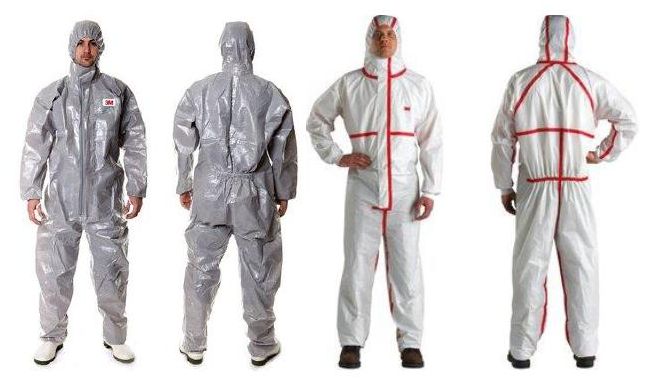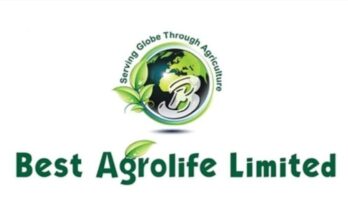With more than a third of the world’s labour force employed in the sector, agriculture is the second greatest source of employment worldwide after services. Agriculture also involves a wide range of different types of machinery, animals, plants and products, working in both indoor and outdoor environments under widely varying geographic and climatic conditions. While agricultural enterprises in many developed countries are highly mechanised and operate on a large scale, in many developing countries, like India, labour-intensive farming is much more common.
Agriculture thus becomes one of the most hazardous of all sectors and many agricultural workers suffer occupational accidents and ill health each year. One of the most important contributory causes of such ill health are exposure to dust and other organic substances such as pesticides and fertilisers, chemicals, and infectious agents.
Hazard
Pesticides are the chemicals of greatest concern in regard to health and safety in agriculture. Agricultural pesticide formulations contain varying concentrations of the pesticide active ingredient. Formulations with 40–50 percent active ingredients are common, and the concentration can be higher. Workers who mix and load pesticides are likely to have direct contact with the pesticide active ingredient in this concentrated form. Splashing can also occur during the mixing of the pesticide formulation with water, particularly when the mixing vessel or application equipment is close to full. Overfilling of the mixing vessel or application equipment can allow pesticides to contaminate outer surfaces, creating a contact hazard for workers beyond the mixing and loading time period. Pesticide applications usually involve potential contact with more dilute materials than those handled during mixing and loading, but the duration of contact is normally much longer, so applicators are considered to be at substantial risk of exposure through both inhalation and dermal contact.
Risks from using applicators such as power sprayers, backpack sprayers or handguns can rapidly increase when wind direction changes and directs the spray back at the operator, or when the operator drives or walks through an area that has been recently sprayed.
Protracted contact with pesticide spray raises the likelihood of skin exposure due to clothing absorption. Applicators inside greenhouses can be exposed to spray due to air movement caused by ventilation systems. Leaks at connection points in hand-held application equipment such as hose-to-tank connections can result in the pesticide mixture dripping on to skin or clothing. Such leaks at connection points can require maintenance or repair that commonly results in skin exposure. Walking through plants recently treated with pesticides often means skin or clothing contact with overhanging foliage, and can result in substantial exposures.
Fertilisers that are a toxic hazard for workers can cause skin irritation and potentially serious respiratory effects through the inhalation of gases. A dust cloud can be produced in front of the worker when dry formulations such as wettable powders or granular material are removed from packaging and transferred to application equipment. In addition to posing an inhalation hazard, the dust can be distributed on the worker’s skin and clothing, and can contaminate the application equipment and the surrounding work area. There is a risk of inhalation of vapours when concentrated liquid formulations are handled or mixed. Spills and splashes can occur when liquid formulations such as emulsifiable concentrates are handled. Spills can result in exposure to skin and clothing, often on the lower portion of the body and on the feet and hands. Splashes can result in exposure to the face, neck and upper torso.
Dusts are generated in the production of various grains, legumes and other field crops. Dusts are most frequently generated during such processes as preparing seed for planting, harvesting, cleaning, primary processing, bagging and transporting crops to market. Dusts may include components such as straw, bagasse, husks of grain, mould fungal and bacterial residues, bioaerosols, endotoxin, pesticide residues, fumigants, and particles of silica.
Acute health effects
Pesticides produce acute health effects when signs and symptoms of poisoning occur shortly after exposure, normally within 24 hours. These effects may be either local or systemic. Local effects are those that occur at the point of contact, as is the case with skin and eye irritation. Systemic effects require absorption and distribution from the entry point to other parts of the body.
Chronic health effects
Cancers such as leukaemia, non-Hodgkin’s lymphoma and multiple myeloma have been associated with occupational exposures to pesticides, particularly herbicides. There is also epidemiologic evidence that suggests an association between lung cancer and pesticide exposure. Fumigants such as methyl bromide are known to be genotoxic and have produced cancers in laboratory animals. Reproductive effects may occur due to either paternal or maternal pesticide exposure. Exposure may affect the sexual function and fertility of both men and women. Exposure by either parent before conception or maternal exposure during pregnancy or breastfeeding may adversely affect the development of the offspring. Other chronic health effects reportedly associated with pesticides include neurotoxicity, liver and thyroid disease and allergic dermatitis.
Such effects tend to be specific to certain pesticides, so the information provided in chemical safety data sheets, pesticide labels and other health and safety materials should be consulted for each particular chemical.
Personal protective equipment (PPE)
Pesticides hazard depends on the product’s toxicity and length of exposure. The severity of a pesticide poisoning depends on the pesticide’s chemical makeup and formulation, its path into the body, the amount that enters the body, and the length of exposure. Wearing PPE can significantly reduce the potential for dermal, inhalation, eye, and oral exposure, and thereby significantly reduce the chances of a pesticide poisoning, but it does not necessarily eliminate it. All pesticide handlers—applicators, mixer/loaders, flaggers, and early-entry agricultural workers—are legally required to follow all PPE instructions that appear on the product label. A pesticide label lists the minimum PPE that a person must wear while performing handling or early-entry activities.
Respiratory protective equipment (RPE)
Agricultural workers encounter a variety of respiratory situations ranging from temporary discomfort caused by allergic reaction to fatal asphyxiation.
The risk of contracting severe lung disease or death can be significantly decreased by using respiratory protection. Respirators protect from breathing pesticide-contaminated air. Various pesticide formulations require different types of respirators. RPE must be selected in compliance with national laws or national or international standards, and consistent with requirements on the pesticide product label. The label will provide specific instructions if required, and if so, which type.
Respiratory protection with pesticide cartridges should be used during mixing and loading which must provide the level of protection required against contact with the pesticide. Surgical masks or cloth covering the nose and mouth are not protective against inhalation of pesticide vapours. RPE should also be selected taking into account the work involved and should be matched to the wearer. The following table summarises the use of several types of commonly available RPE.


Eye and face protection
Eyes are very sensitive to the chemicals contained in some pesticide formulations, especially concentrates. Goggles, face shields, and safety glasses with shields at both the brow and sides are examples of protective eyewear. Shielded safety glasses and full-face shields are good choices in many handling situations because they are relatively comfortable, do not cause fogging or sweating, and provide good eye protection. If goggles will be worn, materials made of polycarbonate that have protected air baffles to avoid fogging are the most comfortable choice. Either goggles or shielded safety glasses can be worn with a half-face respirator.
Protective eyewear can prevent eye injuries in more than 90 percent of cases. Eye protection should always be worn where there is potential for injury to the eyes or face from small particles, toxic chemicals, flying particles, large objects, thermal or radiation hazards, and lasers. According to the types and extent of hazards, different PPE should be worn. These must always remain clean and free of contaminates.

Chemical resistant clothing
According to an EPA report, most pesticide poisoning incidents occur through pesticides contacting the skin. PPE is protective only when used properly. If pesticide gets inside PPE next to the skin, the PPE will no longer protect the wearer. On the contrary, it will hold the pesticide against the skin as long as it is worn, increasing rather than decreasing the likelihood of contact injury or skin absorption and systemic injury.
Ordinary shirts, pants, shoes, and other work clothes are usually not considered PPE, even though pesticide labels often indicate that specific items of work clothing should be worn during certain activities. The work clothes should be made of sturdy material and must be free of holes and tears. Shirt collars should be fastened completely to protect the lower part of the neck. The tighter the fabric weave, the better the protection.
In some instances, the product label requires wearing a coverall, a chemical-resistant suit, or a chemical-resistant apron over work clothes. The term chemical-resistant means that no measurable movement of the pesticide through the material occurs during the period of use. Some PPE is water resistant only. PPE that is water resistant will prevent a small amount of fine spray particles or small liquid splashes from penetrating the clothing and reaching the skin. Waterproof (liquid-proof) material keeps water-soluble materials out, but it may not necessarily keep out oil solvent-based products. Waterproof materials include items made of plastic or rubber. The chemical resistance of a material is an indication of how strongly it resists chemical penetration by pesticide products during use. Always read the pesticide labeling to see if it states which materials are resistant to the pesticide product.
The protection offered by chemical-resistant clothing depends on the fabric, and on design features such as flaps over zippers, elastic at the wrists and ankles, and seams that are bound and sealed. Coveralls should be made of sturdy material such as cotton, polyester, a cotton-synthetic blend, denim, or a non-woven fabric. When wearing a coverall, the opening should be closed securely so the entire body, except the feet, hands, neck, and head, is covered. With two-piece outfits, the shirt or coat should not be tucked in at the waist, rather the shirt should extend well below the waist of the pants and fit loosely around the hips. Well-designed coveralls offering protection from pesticides are tightly constructed, have sealed seams and snug, overlapping closures that do not allow gaps and do not unfasten readily. For example, many coveralls have zippers that are covered by flaps for added protection.
Hearing protection
Around 33 percent of all workers experiencing hazardous noise at work will develop noise-induced hearing loss. Exposure to high levels of noise may result in hearing loss. PPE should be worn when the noise level is 85 decibels or greater averaged over an eight-hour period. Most hearing protection devices have a noise reduction rating (NRR) that indicates the amount of protection provided. In general, look for NRR of 25 or greater.


Foot protection
Pesticide handlers may get pesticides on their feet. Shoes and socks are often sufficient to protect your feet during many handling activities. When handling certain pesticides, however, canvas and leather shoes offer insufficient protection for the same reasons gloves made of these materials are not protective. The product labels for those pesticides require wearing waterproof or chemical-resistant footwear, which could mean shoe covers or boots. If a pesticide is likely to get on the lower legs or feet, chemical-resistant boots that extend past the ankles and at least halfway up to the knee should be worn. Wear waterproof boots when entering or walking through recently treated areas such as lawns before the spray has dried.
Hand Protection
The parts of the body that get the most exposure to pesticide are the hands and forearms. Research has shown that workers mixing pesticides received 85 percent of the total exposure to hands and 13 percent to the forearms. The same study showed wearing gloves reduced exposure by at least 98 percent to applicators who had spills while mixing or applying pesticides. As a result, most product labels require use of waterproof or chemical-resistant gloves during handling and mixing. Gloves should be worn any time pesticides may contact hands, such as when working around contaminated equipment or surfaces.
Polymers used for chemical-resistant gloves are used either individually or in various combinations in commercially available gloves. Canvas and leather gloves will not protect against exposure to pesticides as these materials absorb pesticide easily and cannot be decontaminated.
If it isn’t worn – it won’t protect
PPE not only helps protect people but also improves productivity. Farmers and ranchers can benefit from using the appropriate protective equipment for themselves, family members, and workers when the job and its potential hazards call for it. Protective equipment must be carefully selected. Test fit the protective equipment to be sure of a proper and comfortable fit. If it isn’t comfortable – it won’t be worn; if it isn’t worn -it won’t protect.
Controlling a hazard at its source is the best way to protect workers. OSHA emphasises the use of work site modification or work tasks as the best control to manage or eliminate hazards. When these controls are not feasible or do not provide sufficient protection, then PPE should be employed.
(Vinay Pathak is the Lab Head – 3M India R&D Center, Gurgaon and Subject Matter Expert – Asia Pacific Region. The information and views expressed in the article are author’s own)
Personal protective equipments for agriculture workers

Vinay Pathak writes on the harzards of pesticides when these chemicals touches the body agricultural labourers. Further, he suggests solutions and precautions to avoid such health related problems




